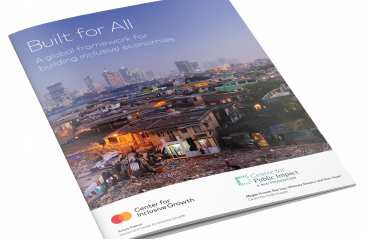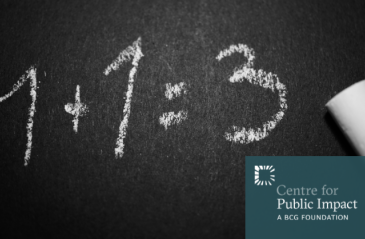
Systemic funding architecture: A proposition to catalyze urban climate finance

There is a growing recognition that progress on the SDGs and mobilising the capital to fund them is far too slow, says @juliafetherston
Share articleWe need a robust mechanism for linking private dollars to viable, large-scale, #SDG-advancing projects, says @juliafetherston of @BCG
Share articleCapital *is* available. What is needed are well-designed, viable #SDG projects for that capital to find a home, says @BCG's @JuliaFetherston
Share articleWe put our vision for government into practice through learning partner projects that align with our values and help reimagine government so that it works for everyone.
To our friends and colleagues in the development finance community,
Is it March already? Time flies. It's certainly been a busy start to the year for the development finance institutions (DFIs), especially the development banks.
In Europe, the has had a year of record investment and met its Paris Climate Change pledges three years ahead of schedule. The Asian Development Bank, meanwhile, has extended US$5 billion for the next three years to support regional cooperation in South Asia, and the African Development Bank has, as ever, been sweeping its developmental arc across the continent, taking in issues ranging from protecting Africa's wildlife to gender inclusivity. And these are just a few examples - there are plenty more to choose from.
So what's next? No doubt there are numerous issues jostling for space in your in-tray. But implementing the Sustainable Development Goals (SDGs) will doubtless be top of mind - for all of us. Of course, agreeing them back in 2015 was a major accomplishment, but there is a growing recognition that progress on developing projects such as expanding energy access or revolutionising irrigation in Africa - and mobilising the capital to fund them - is far too slow.
As you know, too few visionary and transformative projects are being conceived and offered to large investors. In the absence of viable projects, financial innovation within the capital markets - which is critical to closing the SDG investment gap - is not taking place. This is a major reason why spending to advance the SDGs is well below what is needed, despite investments by governments and development organisations in programmes to support that effort. The gap: about US$2.5 trillion annually. We know that at least some of the capital required to close the gap is available (one estimate puts it at US$900m), but we also know that investors are sitting back and waiting to see the projects on the table.
What is lacking is a robust mechanism for linking these private dollars to viable, large-scale, SDG-advancing projects. DFIs like yours, with expertise, connections and passion in abundance, can step boldly into the void, aligning with national external partners to identify the best projects and marketing them to institutional investors. The imperative is clear: put the projects on the table. The capital will follow.
So, how can the project and investment gap be closed?
We have identified six actions that you and your counterparts can take to accelerate the flow of private capital into SDG-advancing projects:
These are just a few suggestions. And you certainly don't need us to tell you that achieving the SDGs will require a major investment of resources from many actors. But that capital is available. What is needed are well-designed, viable projects for that capital to find a home.
DFIs are in a unique position to make that happen - there just needs to be a greater focus on attracting and mobilising private investment. If you and your counterparts do so, we really can move from billions to trillions - in 2018 and beyond.
Yours hopefully,
Julia












